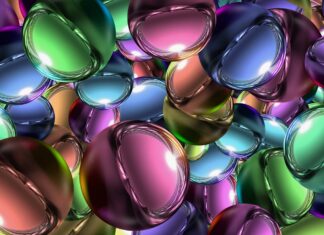Pickleball, a popular sport that combines elements of tennis, badminton, and table tennis, has been rapidly gaining traction worldwide. At the heart of this fast-paced and exciting game is the pickleball ball, a unique piece of equipment that plays a vital role in shaping the gameplay experience. In this comprehensive guide, we delve into the world of pickleball balls, exploring their construction, characteristics, and impact on gameplay. Whether you’re a beginner looking to understand the basics or a seasoned player aiming to up your game, this article is your go-to resource for everything you need to know about pickleball balls.
Understanding Pickleball Ball Construction:
Pickleball balls are specifically designed for the sport, featuring a distinctive construction that contributes to their performance on the court. Typically, pickleball balls are made using a combination of materials, including plastic polymers such as polyethylene or PVC. These materials are chosen for their durability, resilience, and ability to withstand the rigors of intense gameplay. The construction of the ball directly impacts its bounce, flight characteristics, and overall playability, making it an essential factor to consider for players of all skill levels.
One of the key elements that differentiates pickleball balls is the number of holes present on their surface. Traditionally, pickleball balls had larger holes, similar to a wiffle ball, which allowed for slower flight and greater control. However, as the sport evolved, manufacturers introduced balls with smaller and more numerous holes, known as “indoor” balls. These indoor balls offer increased speed and a more lively bounce, catering to players seeking a faster-paced game. Today, players can choose from a range of pickleball balls with varying hole patterns to suit their playing style and preferences.
Apart from hole size and pattern, the weight of the pickleball ball also influences gameplay. Standard pickleball balls weigh between 0.78 to 0.935 ounces (22 to 26.5 grams). The weight affects the ball’s responsiveness, with lighter balls offering quicker play and heavier balls providing more stability and control. Players often select the weight that best complements their playing style, whether they prefer a power-based aggressive game or a finesse-oriented approach.
Another important aspect of pickleball ball construction is the color. Traditional pickleball balls were white or off-white, making them highly visible on both indoor and outdoor courts. However, as the sport gained popularity, manufacturers began introducing bright, vibrant colors like yellow, green, and orange. These colored balls are designed to enhance visibility, especially in outdoor settings where the contrast against the court surface can improve tracking and reduce the chances of losing sight of the ball.
In recent years, a new type of pickleball ball has emerged—the Onix Fuse ball. The Onix Fuse ball is specifically designed for outdoor play, featuring a unique two-piece construction. It consists of a plastic inner core surrounded by a softer, composite outer layer. This construction enhances the ball’s durability, while the softer outer layer provides a consistent and responsive bounce. The Onix Fuse ball has gained popularity for its performance in outdoor conditions, ensuring a satisfying gameplay experience even in windy or challenging environments.
Choosing the Right Pickleball Ball:
Selecting the right pickleball ball is crucial for players to fully enjoy the sport and maximize their performance. Several factors come into play when choosing a ball, including the playing environment, skill level, and personal preferences. Here are some key considerations to keep in mind:
Playing Surface:
Consider whether you’ll primarily play on indoor or outdoor courts. Indoor balls, with smaller holes and faster flight, are ideal for indoor play, while outdoor balls, designed to withstand wind and outdoor conditions, are recommended for outdoor courts.
Skill Level:
Beginners may benefit from using balls with larger holes, as they offer more control and slower flight. Intermediate and advanced players often prefer balls with smaller holes for faster play and increased maneuverability.
Playing Style:
Assess your playing style and whether you favor power and speed or finesse and control. This will help determine the weight and bounce characteristics that align with your preferences.
Visibility:
If visibility is a concern, opt for brightly colored balls that stand out against the court surface, especially for outdoor play.
Brand and Quality:
Choose pickleball balls from reputable brands known for their quality and consistency. Trusted brands often invest in research and development to deliver reliable and high-performance balls.
Conclusion:
The pickleball ball is a vital component of the game, influencing the pace, bounce, and overall playing experience. By understanding the construction, characteristics, and factors to consider when choosing a ball, players can optimize their gameplay and fully immerse themselves in the excitement of pickleball. Whether you’re a casual player or a competitive enthusiast, selecting the right pickleball ball ensures that you can enjoy the sport to its fullest, unleashing the power of precision and performance on the court.
Here are five key features of pickleball balls:
Construction:
Pickleball balls are typically made of durable plastic polymers such as polyethylene or PVC. The construction of the ball affects its durability, bounce, and flight characteristics.
Hole Pattern:
Pickleball balls come in different hole patterns, ranging from traditional larger holes to smaller and more numerous holes. The hole pattern affects the speed, control, and playability of the ball.
Weight:
Pickleball balls have a standardized weight range of 0.78 to 0.935 ounces (22 to 26.5 grams). The weight of the ball influences its responsiveness, with lighter balls offering faster play and heavier balls providing more stability and control.
Color:
Pickleball balls are available in a variety of vibrant colors, such as yellow, green, and orange. The color enhances visibility on the court, making it easier for players to track the ball during gameplay.
Indoor and Outdoor Variants:
Different pickleball balls are designed specifically for indoor and outdoor play. Indoor balls typically have smaller holes and faster flight characteristics, while outdoor balls are more durable and perform well in outdoor conditions, including wind resistance.
These key features contribute to the overall performance, playability, and enjoyment of pickleball, allowing players to choose balls that suit their playing style, preferences, and the specific playing environment.
Pickleball, a sport that combines elements of tennis, badminton, and table tennis, has gained tremendous popularity in recent years. At the heart of this game is the pickleball ball, a small plastic sphere that plays a crucial role in the gameplay experience. In this section, we will explore the key features of pickleball balls in more detail, delving into their construction, materials, and variations.
Pickleball balls are typically made of plastic polymers, such as polyethylene or PVC. These materials offer the necessary durability and resilience to withstand the demands of the game. The construction of the ball contributes to its overall performance, including its bounce, flight characteristics, and durability. The goal is to create a ball that strikes a balance between responsiveness and durability, allowing players to enjoy a fast-paced and engaging game while ensuring that the ball can withstand repeated hits and maintain its shape.
One important aspect of pickleball ball design is the hole pattern on its surface. Traditional pickleball balls featured larger holes, similar to a wiffle ball, which resulted in slower flight and greater control. However, as the sport evolved, manufacturers introduced balls with smaller and more numerous holes, commonly referred to as “indoor” balls. These balls offer increased speed, making the game more dynamic and challenging. The smaller hole pattern also affects the ball’s aerodynamics, contributing to its flight trajectory and overall responsiveness on the court.
In addition to the size and pattern of the holes, the weight of the pickleball ball also influences gameplay. Standard pickleball balls typically weigh between 0.78 to 0.935 ounces (22 to 26.5 grams). The weight affects the ball’s responsiveness and the amount of force required to propel it. Lighter balls allow for quicker play and more agile movements, while heavier balls offer greater stability and control. The choice of weight depends on the player’s style of play, personal preference, and skill level.
Color is another notable feature of pickleball balls. Traditionally, pickleball balls were white or off-white, making them highly visible against various court surfaces. However, as the sport grew in popularity, manufacturers began introducing vibrant colors to enhance visibility and add a touch of excitement to the game. Brightly colored balls, such as yellow, green, or orange, provide a strong contrast against the court surface, making it easier for players to track the ball’s movement and react swiftly during intense gameplay.
In recent years, a specialized type of pickleball ball has gained popularity—the Onix Fuse ball. This ball is designed specifically for outdoor play, where wind resistance and durability are essential factors. The Onix Fuse ball features a unique two-piece construction, with a plastic inner core surrounded by a softer, composite outer layer. This construction provides durability and resilience while maintaining a consistent and responsive bounce. The Onix Fuse ball has become a preferred choice for outdoor pickleball enthusiasts, as it delivers reliable performance even in challenging outdoor conditions.
When selecting pickleball balls, players must consider various factors, including the playing environment, skill level, and personal preferences. Indoor balls with smaller holes are generally used for indoor play, providing faster and more agile gameplay. Outdoor balls, on the other hand, are designed to withstand wind and outdoor conditions, ensuring consistent performance on outdoor courts. Players can also choose balls based on their preferred weight, color, and brand reputation.
In conclusion, pickleball balls are an integral part of the game, influencing the speed, bounce, and overall gameplay experience. The construction, hole pattern, weight, color, and specialized variants all contribute to the performance and durability of pickleball balls. By understanding these key features and selecting the right balls for their playing style and environment, players can fully immerse themselves in the excitement and competitiveness of pickleball, enhancing their overall enjoyment of this rapidly growing sport.






















